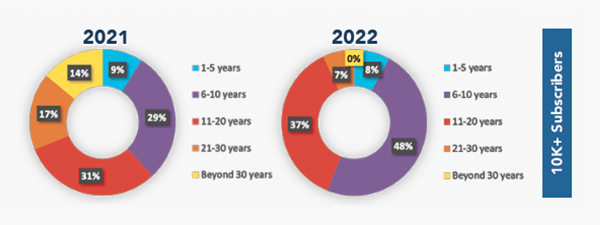Blog
February 13, 2023
Setting the Record Straight: MSOs Love Fiber
By Joe McGarvey, Senior Director, Marketing |

Is there anything more frustrating than someone picking a fight with you on a subject in which you’re in 100-percent agreement?
Thousands of words have been devoted in just the first few weeks of this year alone to the fallacy that cable operators are anti-fiber. One recent online article started out assuring readers “harboring any doubt that fiber represents cable’s future” that if you look close enough, read between the lines, you could discern that MSOs, deep down inside, believe that their networks will eventually terminate in fiber connections.
News flash: Absolutely no one, from cable executives to customer service representatives, maintains even a whiff of a scintilla of doubt that fiber is the future of broadband. If MSOs could blink their eyes, I Dream of Jeanie style, and swap out the millions of miles of coaxial cable in their networks with fiber, they would do so in, well, a blink of an eye.
Every MSO, in fact, is actively migrating its HFC network to fiber. And we’ve got the data to prove it.
Survey Says
We asked about 100 cable professionals in our two most recent HFC evolution surveys to estimate how long it would take before they had migrated all their subscribers off of their HFC networks and on to an all-fiber network. All of them, as the below results indicated, provided their best-guest estimates for the completion of what amounts to an HFC-to-FTTH migration. None of them said, “Forget you, we’re sticking with coaxial all the way to doomsday!”
Considering the expense and logistical difficulties associated with fiber builds, what would be the most aggressive timeframe for completely replacing your HFC network with all fiber?
The world is riddled with ambiguity. It’s easy to spot. It should also be easy to spot where none exists. Nothing, in either their actions or words, suggests that MSOs are anything but pro-fiber. Where is the wiggle room in the fact that MSOs overwhelmingly opt for fiber in greenfield buildouts? Where is the hedging in CableLabs including PON as a technology component of its 10G Platform initiative?
The reality is that the only thing that matters to MSOs, the only thing they are zealots about, is continuing to give their subscribers the best broadband experience in the world.
For whatever reason, a false narrative has been created depicting MSOs as so wedded to the smallest portion of their infrastructure that they would deny the bandwidth-carrying potential of a medium that makes up the biggest part of their HFC networks. This strawhorse, or coaxhorse, in this case, construction of the cable professional who secretly knows that fiber is the future but can’t say so publicly, just doesn’t make sense. It just doesn’t exist.
Strike Up the Broadband
The reality is that the only thing that matters to MSOs, the only thing they are zealots about, is continuing to give their subscribers the best broadband experience in the world. The most expedient and economic path to fulfill that mission for many MSOs is to upgrade their networks by optimizing the speed and performance of the 3.1 version of DOCSIS technology and then moving onto its successor (DOCSIS 4.0) as market demand dictates.
Not only are these voices creating a false argument, they are doing it without nuance, insisting that every MSO who doesn’t immediately rip out every inch of coax and replace it with fiber is a fiber hater. The world is obviously a little more complicated than that. But at the same time, it doesn’t take a think tank to understand that just because an MSO is upgrading to DOCSIS 4.0 doesn’t mean it doesn’t believe fiber is the future.
Again, every MSO is moving to fiber. It’s just not going to happen overnight, especially when that would mean replacing millions of miles of coax cable, connected to millions of homes that are currently receiving the best broadband in the world. It’s just good business to follow a timetable that makes the most economic sense and imposes the least amount of disruption to customers.
Capacity and then Some
Is there a risk that at some point their HFC networks will not keep pace with customer demand? Of course, but it’s a minute one. DOCSIS 4.0 delivers multigigabit speeds, roughly 10Gbps in the downstream and 6Gbps in the upstream. That’s a lot of capacity, likely more than enough to handle any holodeck-like applications that crop up over the next decade or so.
In the end, that’s probably what the fiction around MSOs and hostility toward fiber is all about. FTTH providers are currently rolling out services delivering multigigabit symmetrical speeds. The reality is that they are spending a tremendous amount of money to get out in front of actual demand, which isn’t a bad place to be. Today’s surplus capacity will eventually be utilized. But possessing capacity that almost nobody will need for at least the next several years, doesn’t justify making up scenarios that don’t exist.
Let’s stop picking fights and trying to score points through unhelpful and unnecessary posturing and instead focus on what’s important: delivering this generation and the next the best possible broadband experience available. That includes attributes other than speed and capacity, such as security, responsiveness and reliability. MSOs are laser focused on those objectives, regardless of the underlying technology or transmission medium.

